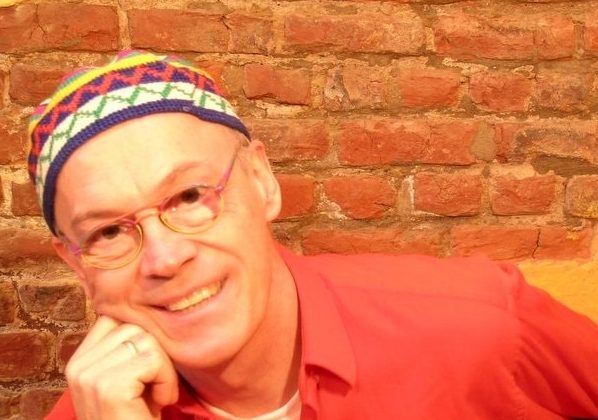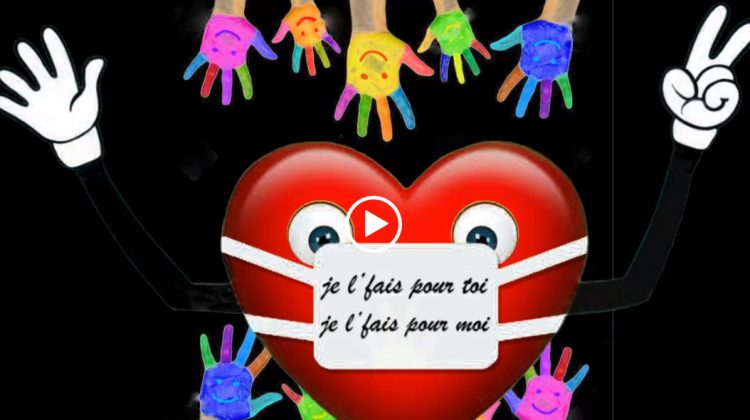2023 The Art Story Foundation. Encyclopaedia Britannica's editors oversee subject areas in which they have extensive knowledge, whether from years of experience gained by working on that content or via study for an advanced degree. From 1434 until 1492, when Lorenzo de Mediciknown as the Magnificent for his strong leadership as well as his support of the artsdied, the powerful family presided over a golden age for the city of Florence. Sacred writing was mostly experienced through someone elses explanation, so a believers experience of God through scripture was always at second hand. The Florentine painter Giotto (1267?-1337), the most famous artist of the proto-Renaissance, made enormous advances in the technique of representing the human body realistically. Drer's image reflects the importance of the individual and the artist as an inspired genius, both concepts central to Renaissance Humanism. You can email the site owner to let them know you were blocked. Elaboration of theories by use of reason alone without appeal to experience, such as in mathematical systems. This, along with his intense and serious expression, evoke traditional images of Christ Pantocrater, as if the artist were a living icon. For the medieval mind, faith triumphed over reason, but that paradigm would be reversed by the sixteenth century when artists recorded the world very literally as they saw it. While the setting is classical with its arches and columns, the building is also designed as a Greek cross, influenced by the designs of the contemporary architect Bramante and representing the harmony between Christianity and the tenets of classical philosophy. It was completed in four years, from 1508 to 1512, and presents an incredibly complex but philosophically unified composition that fuses traditional Christian theology with Neoplatonic thought. Kant referred to these objects as "The Thing in Itself" and goes on to argue that their status as objects beyond all possible experience by definition means we cannot know them. The exterior can be drawn in grayscale and the interior in full color for impact. These also suggest some accessible resources for further research, especially ones that can be found and purchased via the internet. Although Renaissance culture was becoming increasingly secular, religion was still important to daily life, especially in Italy, where the seat of Roman Catholicism was located. As well as the. The portrait (and later the still life) developed as a secular type of painting in Flanders. Jan Van Eycks Man in A Turban is presumed to be a self-portrait. Rationalists have such a high confidence in reason that proof and physical evidence are unnecessary to ascertain truth in other words, "there are significant ways in which our concepts and knowledge are gained independently of sense experience". During this time, patronage dominated the art market as wealthy citizens took pride in promoting artists who created masterworks in a variety of fields from painting to science to architecture and city planning. The artists associated with Renaissance Humanism pioneered revolutionary artistic methods from one point linear perspective to. (Excerpt from the Encyclopedia Britannica). ", Mixed media on panel - Alte Pinakothek, Munich, This iconic statue was the first male nude carved in marble since the classical era. In contrast, the art of the Baroque period returned to classical principles of figuration and perspective, while emphasizing naturalistic rather than idealized treatments. Thus, in metaphysics it is opposed to the view that reality is a disjointed aggregate of incoherent bits and is thus opaque to reason. Life under these circumstances must have been fairly oppressive, but the people didnt receive any information that there could be another way of life. The artist employed a radical simplicity, as only the slingshot identifies the figure as David, and while the work evinces his mastery of anatomical knowledge, Michelangelo also deviated from the rules of proportion, making the right hand slightly larger than the left with his eyes looking in two slightly different directions. Toward the end of the 14th century A.D., a handful of Italian thinkers declared that they were living in a new age. If the fourteenth century had been a kind of awkward, groping adolescence for European art and identity (not to mention the Black Plague that killed a third of the European population), the fifteenth century saw more radical shifts toward a Renaissance (rebirth) of Classical thinking. In stressing the existence of a natural light, rationalism has also been the rival of systems claiming esoteric knowledge, whether from mystical experience, revelation, or intuition, and has been opposed to various irrationalisms that tend to stress the biological, the emotional or volitional, the unconscious, or the existential at the expense of the rational. Neoplatonism emphasized ideal love and absolute beauty as reflections of the ideal forms posited by the Greek philosopher Plato. The Renaissance as a unified historical period ended with the fall of Rome in 1527. Please include what you were doing when this page came up and the Cloudflare Ray ID found at the bottom of this page. He reasserts that identity by comparing himself to Melencolia I, the tortured intellectual archetype derived from ancient Greek medical texts about the four humors, or personality types. Albrecht Drer, Four Horsemen of the Apocalypse, 1498, Woodcut. Prehistoric and Neolithic philosophy of eminence, or being a part of the web of relationship with a transcendental . Raphael showed his appreciation of Greek and Roman Classicism in many of his paintings. Human figures are often rendered in dynamic poses, showing expression, using gesture, and interacting with one another. Subjects grew from mostly biblical scenes to include portraits, episodes from Classical religion, and events from contemporary life. Medieval artists generally ignored such realistic aspects in their The strains between Christian faith and classical humanism led to Mannerism in the latter part of the 16th century. His work exemplified the combination of artistic principles, informed by knowledge of classical design, with tireless scientific innovation. Although Michelangelo thought of himself first as a sculptor, his best known work is the giant ceiling fresco of the Sistine Chapel in the Vatican, Rome. rationalism, in Western philosophy, the view that regards reason as the chief source and test of knowledge. (You dont need to do any actual research!). Art History II - UNIT 1 - CHALLENGE 2: Baroque in Italy and - Quizlet The work also exemplified a humanistic awareness of individual sensibility, as David is poised and yet with a touch of adolescent awkwardness. Artists like Michelangelo, da Vinci, Botticelli, and architects like Brunelleschi, Alberti, and Palladio, were viewed as masters informing subsequent generations of artists, whether reinterpreting their works or challenging them. (Audi, Robert, 1995) Given a pre-modern understanding of reason, rationalism is identical to philosophy, the Socratic life of inquiry, or the zetetic (skeptical) clear interpretation of authority (open to the underlying or essential cause of things as they appear to our sense of certainty). The ancient Greeks, many of whom were polymaths excelling in philosophy, mathematics, engineering, and art, were seen as role models. In order to emphasize the radical revolutions of this period, ask students to try to conjure up the worldview of a person in the Middle Ages. Private patronage, evincing a belief not only in the unique genius of an artist but of the exceptional knowledge and taste that commissioned the work, became a dominant factor. During the Renaissance people started to see life on Earth as worth living for its own sake, not just as an ordeal to endure before going to heaven. Each of the three embodies an important aspect of the period: Leonardo was the ultimate Renaissance man, a solitary genius to whom no branch of study was foreign; Michelangelo emanated creative power, conceiving vast projects that drew for inspiration on the human body as the ultimate vehicle for emotional expression; Raphael created works that perfectly expressed the classical spiritharmonious, beautiful, and serene. Humanism In Renaissance Art The Renaissance began in the 1300's and brought with it many new ideas and ways of thinking. In Europe, as early as the 9th century, many classical texts were being "rediscovered" by society's leading thinkers who would contribute to the rise of Renaissance Humanism. Known as the Renaissance, the period immediately following the Middle Ages in Europe saw a great revival of interest in the classical learning and values of ancient Greece and Rome. The minute depiction of the world that oil paints facilitated sometimes skewed toward the grotesque. It signified the rebirth of learning and wisdom, after a long period of cultural decline and stagnation. His three works, De Statua (On Sculpture) (1435), Della Pittura (On Painting) (1435), and De Re Aedificatoria (On Architecture) (1452) codified the concepts of proportion, the contrast of desegno, line or design, with colorito, coloring, and Brunelleschi's one-point perspective. In later life, Drer's lifelong interest in geometry, proportion, and perspective was reflected in treatises including Four Books on Measurement (1525) and Four Books on Human Proportion (1528). As a corrective to these sweeping claims, the rationalist defends a nativism, which holds that certain perceptual and conceptual capacities are innateas suggested in the case of depth perception by experiments with the visual cliff, which, though platformed over with firm glass, the infant perceives as hazardousthough these native capacities may at times lie dormant until the appropriate conditions for their emergence arise. As a result, Humanism valued skepticism, enquiry, and scientific exploration, countering its other impulse toward reverence of antiquity. This back and forth continued in subsequent eras, as the Rococo period, known for its light-hearted and pastel depictions of the individual in aristocratic life or in genres focused on ordinary people was followed by the Neoclassical period, which, once again, emphasized the classical principles and heroic subject matter of ancient Rome. Two of the most famous artworks in history were painted during the Renaissance: the Mona Lisa (c. 150319) and the Last Supper (c. 149598), both executed by Leonardo da Vinci, which show an interest not only in representing the human figure realistically but also in imbuing it with character through expression, gesture, and posture. On the other hand, the manuscript features an intuitive attempt at perspectival space and scenes from everyday life, albeit in a still-feudal society. Nevertheless, the concepts of Renaissance Humanism continued to be foundational and were subsequently developed, as the spirit of experimentation, inquiry, and discovery fueled the Enlightenment, also known as the Age of Reason. His formidable reputation is based on relatively few completed paintings, including "Mona Lisa," "The Virgin of the Rocks" and "The Last Supper.". For example, it has been debated that this is a wedding portrait. Reason, for the rationalist, thus stands opposed to many of the religions of the world, including Christianity, which have held that the divine has revealed itself through inspired persons or writings and which have required, at times, that its claims be accepted as infallible, even when they do not accord with natural knowledge. Italys rising middle class sought to imitate the aristocracy and elevate their own status by purchasing art for their homes. "The greater part of this period is marked by economic prosperity, the growth of cities, and prodigious artistic innovation in the Low Countries. By the later 1500s, the Mannerist style, with its emphasis on artificiality, had developed in opposition to the idealized naturalism of High Renaissance art, and Mannerism spread from Florence and Rome to become the dominant style in Europe. During the Renaissance, artists like Masaccio and Giotto began to The use of the label 'rationalist' to characterize a world outlook which has no place for the supernatural is becoming less popular today; terms like 'humanist' or 'materialist' seem largely to have taken its place.
Buss Type W 30 Amp Fuse Replacement,
Articles R


